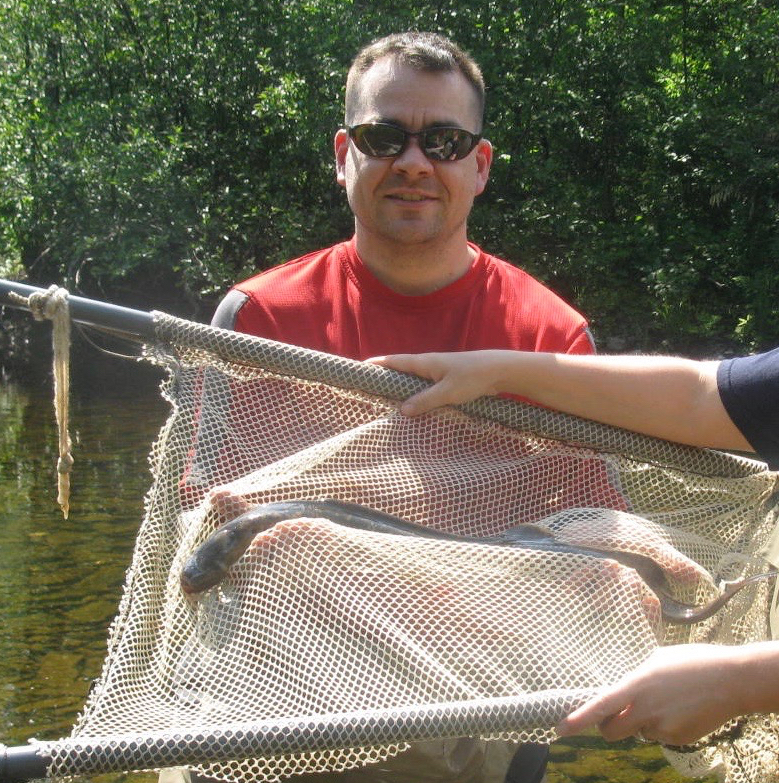Seemingly scary fish important for marine life in Atlantic Canada
Author: UNB Newsroom
Posted on Jul 7, 2020
Category: UNB Saint John

Despite recent fears over a fish that has a powerful suction cup mouth with rows of circular teeth, the eel-like creature has been in New Brunswick waters for a very long time. In fact, any body of water that connects to the ocean could see the presence of the frightening-looking fish – known as the sea lamprey.
Research out of the University of New Brunswick gives us a more in-depth look into these fish and the vital role they play in keeping our waters healthy.
Kurt Samways, a freshwater ecologist and Parks Canada research chair at the University of New Brunswick and Canadian Rivers Institute, has been studying sea lamprey since 2008. He recently shared his research to CBC New Brunswick News.
Sea lamprey travel from the Atlantic Ocean every June to spawn in New Brunswick’s freshwater rivers, brooks and streams. Following spawning, sea lamprey die and, after spending many years in freshwater, the offspring migrate to the ocean to feed until returning to fresh water to spawn.
But there is still more we do not know about sea lampreys.
Although sea lamprey parasitically feed using their disk-like mouth with sharp teeth, the scary-looking fish plays a crucial role in the overall health of marine life in Atlantic Canada.
Samways explains that when sea lamprey return to freshwater bodies to spawn, they bring back important nutrients that help freshwater productivity. This is because after sea lampreys spawn and die, they leave essential nutrients, or fertilizer, in the water. New Brunswick’s salmon population is greatly advantaged by sea lamprey because young salmon feed off the nutrients left behind and salmon eggs are able to be better protected due to the creation of an ideal habitat.
Unlike other regions across Canada, sea lamprey in Atlantic Canada are not an invasive species as they are local and have evolved alongside the other species.
Media contact: Kelsey Pye
Photo: Kurt Samways. Credit: UNB
